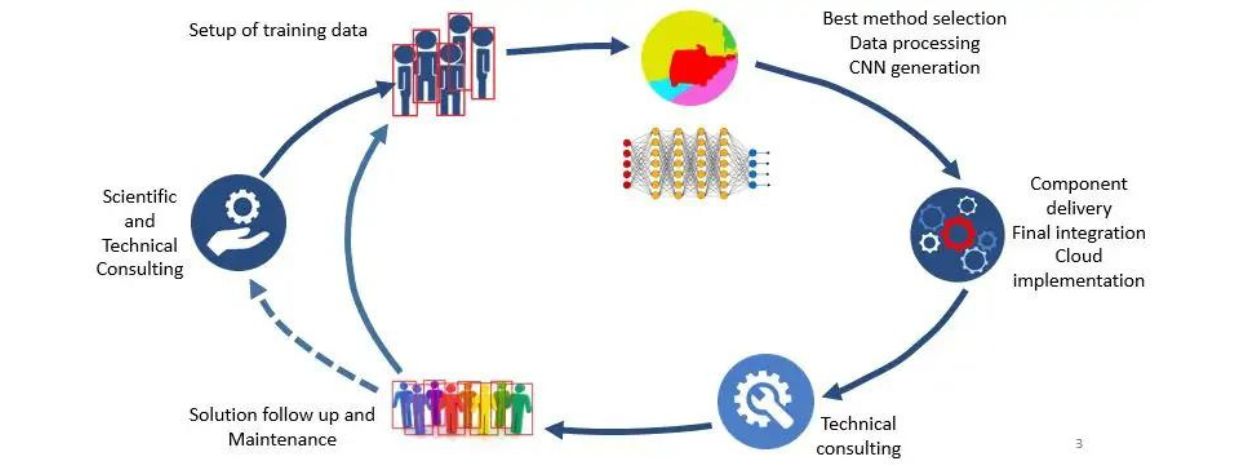
- 27th Feb 2024
- 06:03 am
With the increased digitization of the modern society, the explosive growth in data has presented significant opportunities and key challenges to businesses and companies in every industry. The amount, diversity, and speed of generation of data are too large, which necessitates developing the effective tools to be efficiently analyzed and comprehended. Deep learning is one of such tools that has turned into a game-changer and the way we derive the information and work with the complex data. This article discusses the ways in which deep learning is transforming data analysis: what it is, how it can be applied and what implications it might have on the future of technology.
Fundamental Principles of Deep Learning
Deep learning is a form of machine learning that can utilize artificial neural networks to come across complicated patterns in information. Such networks are constructed by using layers of interconnection among neurons, in a hierarchy. The model can learn during the training process using labeled data via adjusting the inner parameters in an attempt to reduce prediction errors when compared with the actual results. Deep learning models are able to automatically extract key features out of raw data unlike traditional methods, which are manual feature selection based. This skill renders them ideal in solving hard as well as complicated tasks rapidly and with great deal of accuracy.
Key Architectures and Techniques
Convolutional Neural Networks (CNNs):
- Specialized for image recognition and computer vision tasks.
- Captures spatial hierarchies of features in visual data.
- Enables accurate detection and classification of objects in images and videos.
Recurrent Neural Networks (RNNs):
- Ideal for sequential data analysis.
- Appropriate to the natural language processing (NLP) tasks as taking the form of text generation, sentiment analysis, and language translation.
- Allows one to understand and forecast time series data, like study prices or weather conditions.
Generative Adversarial Networks (GANs):
- Capable of generating realistic synthetic data.
- Useful for data augmentation, creative applications, and generating images, audio, and text.
- Comprises a generator and discriminator network, engaged in a competitive learning process.
Transfer Learning:
- Involves leveraging pre-trained models for new tasks with minimal retraining.
- Provide a point of reference to fine tune on fancy dataset-specific datasets.
- Decreases requirement on large labeled data and computing power.
Pre-trained Models:
- Pre-trained models trained on large data to perform a particular task like image classification or language understanding task.
- Serve as a starting point for fine-tuning on domain-specific datasets.
- Reduces the need for extensive labeled data and computational resources.
Hierarchical Clustering:
- Technique for grouping data points into clusters based on similarities.
- Divides data into a hierarchy of clusters, facilitating understanding of data structures.
- Practical in evolutional data analysis, and finding useful patterns within complicated data sets.
Dimensionality Reduction:
- Techniques such as Principal Component Analysis (PCA) and t-Distributed Stochastic Neighbor Embedding (t-SNE).
- Discard extra features without compromising important data.
- Make visualization and interpretation of high-dimensional data.
Long Short-Term Memory (LSTM) Networks:
- A kind of RNN design that has memory units capable of retaining information across extended sequences.
- Useful when contextual understanding as needed in post-processing such as tasks, speech recognition, and language modeling and modeling.
These core architectures and methods highlight the wide range of capabilities that deep learning has to change the way we approach data analysis so that we could make more precise predictions, deeper insights, and novel use cases in many fields.
Applications Across Industries
Most of the industries have adapted deep learning which is an innovation and efficiency. It finds usage in medical care as a diagnosis, outcome prognostic and a medicine developer. Its applications in finance lie on forecasting the markets, detecting fraud and making better investments. It plays a focal point in autonomous cars and also natural language processing and recommendation system and cybersecurity. To the world of students, who need the help of deep learning more than ever before, the realization of these practical applications will draw their attention to its higher place in current technology.
Healthcare:
- Diagnosing diseases from medical images
- Discovering new drugs faster
- Personalizing treatment plans for patients
Finance:
- Predicting stock market trends
- Detecting fraudulent transactions
- Assessing risks for lending money
Retail:
- Understanding customer preferences
- Optimizing inventory management
- Providing personalized product recommendations
Automotive:
- Enabling self-driving cars
- Predicting and preventing breakdowns
- Managing traffic flow and congestion
Manufacturing:
- Predictive maintenance for machinery
- Quality control for products
- Optimizing production processes
Challenges and Future Directions
Deep learning has been very successful; however, it encounters serious challenges as well. Deep neural networks are also expensive to train on large labelled datasets and substantial computing power, so their use is disadvantaged to smaller teams. Moreover, these models are usually not transparent, and it is difficult to justify their choices. Solving such problems requires improved hardware, cleverer algorithms, and interdisciplinary teamwork. Current research areas are devoted to faster training, better interpretability of models and novel architectures. To students requiring the deep learning assignment help, having this kind of knowledge of challenges posed goes to show that working in this kind of discipline is not only complex, but also innovative.
Conclusion
Summing up, deep learning is changing the future of data analysis, in the possibility to find smarter answers in the sphere of image recognition, natural-language processing, and predictive analysis. The capability to learn complicated patterns by using data itself transformed the approach to solving practical issues. Deep learning will continue expanding and will be more influential in fostering innovation and shaping the contemporary technology. To study this area effectively, a student interested in it should first of all get proper Machine Learning Assignment Help to learn more about its effects and acquire skills in the practical use of it.
About The Author:
- Name: Dr. M Stephen
- Qualification: Ph.D. in Data Science
- Bachelor's Degree: Bachelor of Science in Computer Science
- Master's Degree: Master of Science in Data Science
- Research Focus: Skilled in the usage of deep learning in data analytics and interpretation.
- Expertise: Expertise in the code and implementation of deep learning models in various data analytics tasks including image recognition, natural language processing and predictive analytics.








